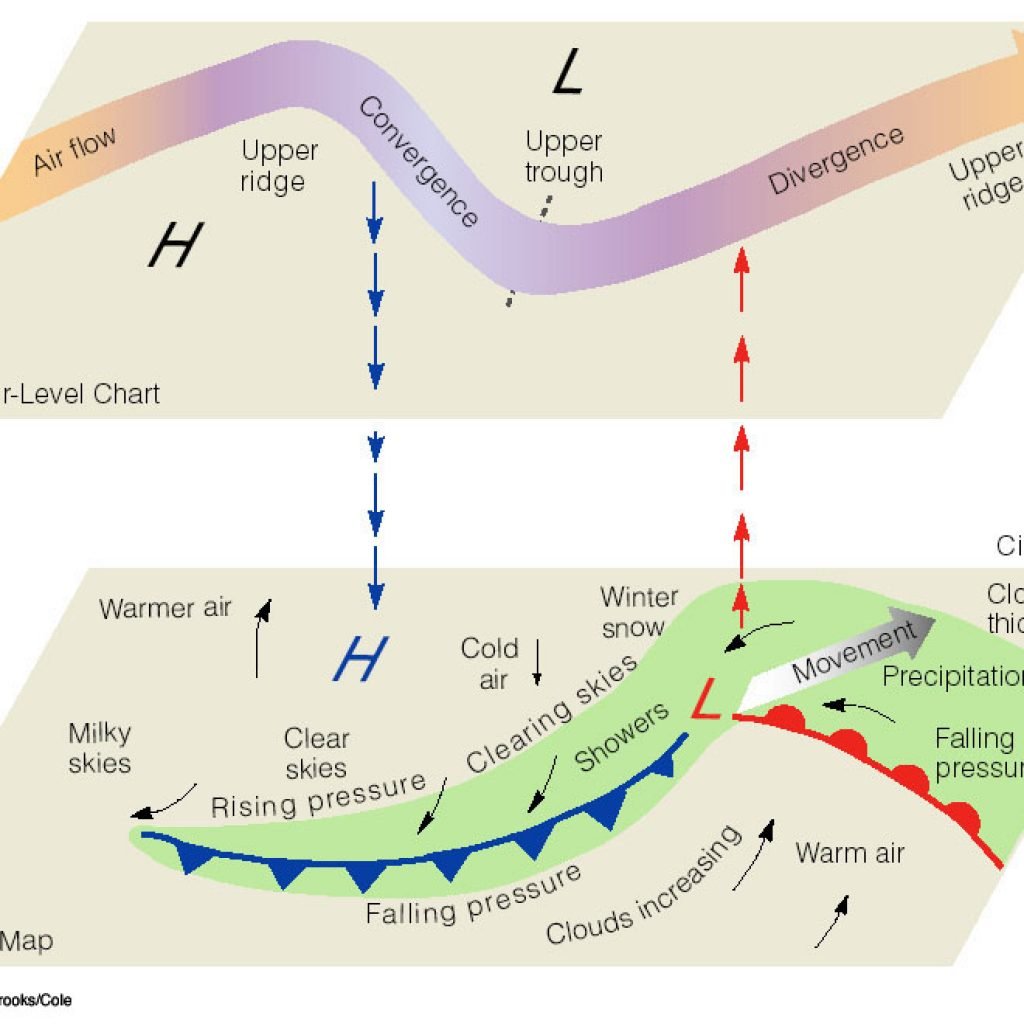Mid Latitude Cyclones Notes Grade 12 Mid-latitude cyclones, also known as extratropical cyclones or wave cyclones, are large-scale low-pressure systems that form in the middle latitudes, typically between 30 and 60 degrees latitude. These cyclones play a crucial role in shaping the weather patterns in these regions.
Introduction to Mid Latitude Cyclones
These are low pressure weather systems that occur in the middle latitudes of the earth, usually between 30° and 60° latitude north and south of the equator. They are sometimes called temperate cyclones, extra-tropical cyclones, mid-latitude cyclones, frontal depressions or wave cyclones.
The system is made up of a cold front and a warm front. The cold fronts reach South Africa mostly in winter when all the pressure belts and wind systems move slightly north. This is why the south-western Cape receives winter rainfall. The rain is brought by cold fronts passing over this area passing from east to west. The warm front is bent southwards away from South Africa.
Here are some key notes on mid-latitude cyclones for Grade 12:
- Formation:
- Mid-latitude cyclones form along the polar front, where cold polar air meets warm subtropical air.
- The temperature contrast between these air masses creates a frontal boundary, leading to the development of a low-pressure system.
- Structure:
- Mid-latitude cyclones have a typical structure with warm and cold fronts.
- The warm front is associated with the advancing warm air mass, and the cold front marks the boundary where cold air displaces warm air.
- Cyclogenesis:
- Cyclogenesis is the process of cyclone formation.
- It often involves the development of a wave along the polar front, leading to the formation of a low-pressure center.
- Life Cycle:
- The life cycle of a mid-latitude cyclone includes the initial stage (cyclogenesis), mature stage, and occlusion stage.
- The occlusion stage occurs when the cold front catches up with the warm front, leading to the lifting of warm air.
- Movement:
- Mid-latitude cyclones move from west to east due to the westerlies, which prevail in the middle latitudes.
- Weather Associated:
- Mid-latitude cyclones bring diverse weather conditions, including precipitation, cloud cover, and changing temperatures.
- Intense storms and precipitation often occur along the frontal boundaries.
- Frontal Lifting:
- The lifting of air at the front leads to the formation of clouds and precipitation.
- Warm air rises over the cold air at the warm front, creating stratiform clouds and precipitation.
- Impacts:
- Mid-latitude cyclones have a significant impact on weather patterns and can cause severe weather events, such as storms, heavy rain, and snowfall.
- Polar Front Theory:
- The polar front theory, proposed by Norwegian meteorologist Vilhelm Bjerknes, explains the development and movement of mid-latitude cyclones.
- Influence on Climate:
- Mid-latitude cyclones play a crucial role in redistributing heat and moisture, influencing the overall climate in the middle latitudes.
Covered on these notes
- Stages of Development
- Cold Front Conditions
- Warm Front Conditions
- Cold Front Occlusion
- Warm Front Occlusion
- Satellite Photo of Mid-Latitude Cyclone
- Synoptic Map of Mid-Latitude Cyclone
Video Lesson Midlatitude Cyclones:
Mid Latitude Cyclones Visuals

Mid Latitude Cyclones Grade 12 Question and Answers
Common Questions about Mid Latitude Cyclones
Give seven characteristics of mid latitude cyclone
- Move west to east
- It has cold front and warm front
- Affect south Africa in winter
- They occur in families or groups
- It has oval isobars
- Occur through out the year
- Occur between 30-60 degrees North and South
- Form between 40 – 60 degrees North and South
Give 4 stages of Mid latitude cyclone
1. Initial stage
- Two air mashes do not mix because they separated by front.
- A cell of low pressure begins
2 Mature stage
- Air moves clockwise in southern hemisphere and anti clockwise in northern hemisphere.
- Polar front forms cold and warm front -cold front lead to cold air, area of cold front called cold sector
- Warm front lead to warm air , area of warm front lead to warm sector
3 Occluded stage or Occlusion stage
- cold front overtakes warm front / warm front overtakes cold front.
4. Dissipating stage / decaying stage
System stars to slow down/ dissipate System become weak it ends.
Name conditions which are necessary for the formation of mid latitude cyclones
- Warm ocean waters of at least 78°F (26°C)
- At least 5° latitude from the equator;
- Low vertical wind shear;
- Moisture in the mid-troposphere;
- Unstable Conditions ESS5